Blog
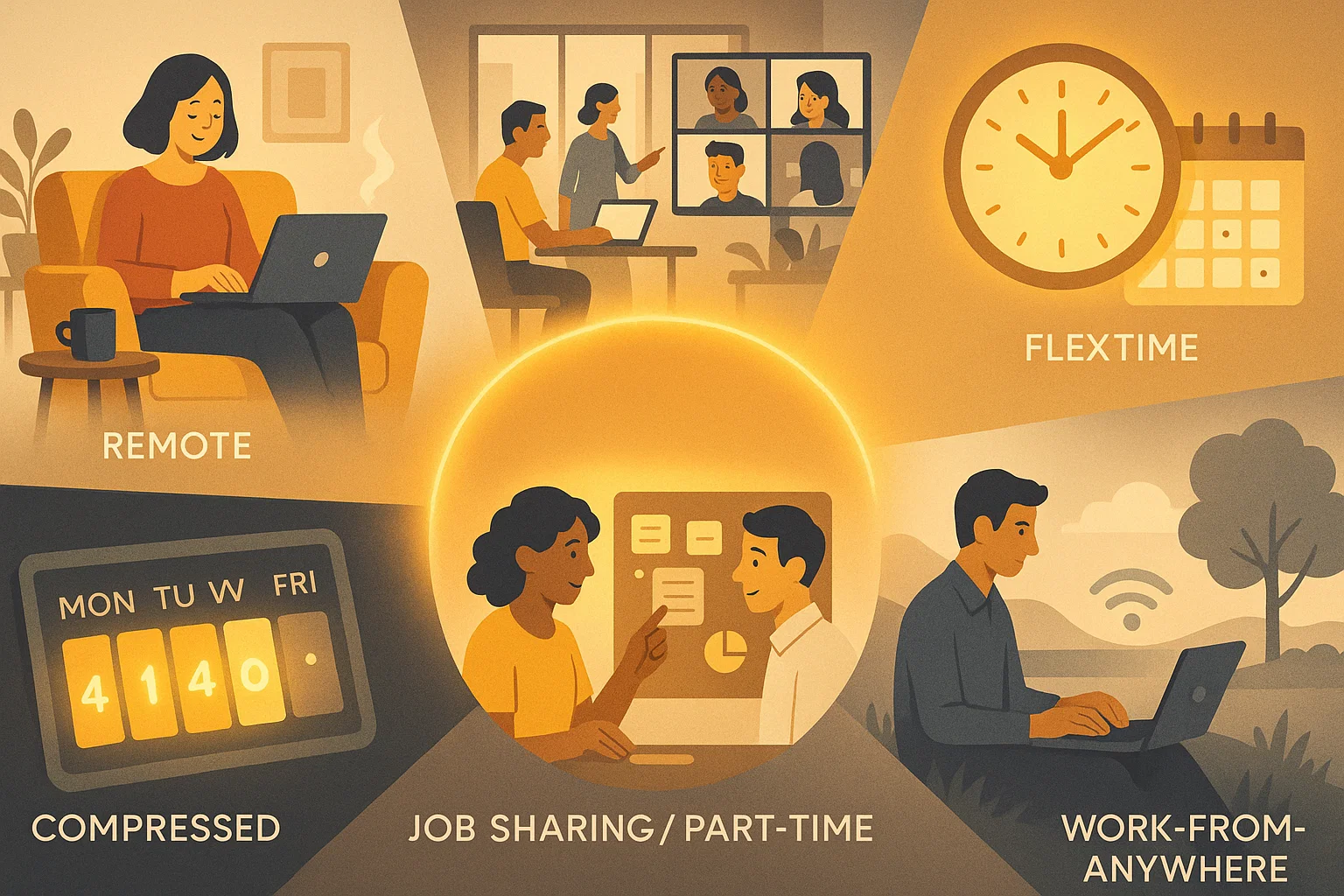
What Are Flexible Work Arrangements and Their Future in the Modern Workplace
Work doesn’t look like it used to. Since the pandemic, people have wanted flexible work arrangements, not just different hours but real choices in where and how they work.
For many teams, the flexible meaning now covers time, place, and pace. Companies that lean in are seeing better team member productivity, stronger retention, and calmer Mondays.
This guide breaks down the hybrid work model, the menu of flexible options, what’s great, and what’s tricky. And how flexible work arrangement brings it together with desk booking software, a meeting room booking system, and hybrid work software that simplifies the day.
What Are Flexible Work Arrangements?
Think of flexible work as a toolkit, not a single policy. You can mix and match:
- A flexible work schedule (start earlier, log off later, or vice versa)
- Location choice: office, home, or work-from-anywhere
- Role tweaks like part-time or job sharing
- Measuring outcomes instead of hours-in-seat
Why this matters now:
- Employees expect autonomy (and will choose employers who offer it).
- Flexible workplace solutions widen your hiring pool.
- Distributed teams help with continuity when life happens.
Types of Flexible Work Arrangements
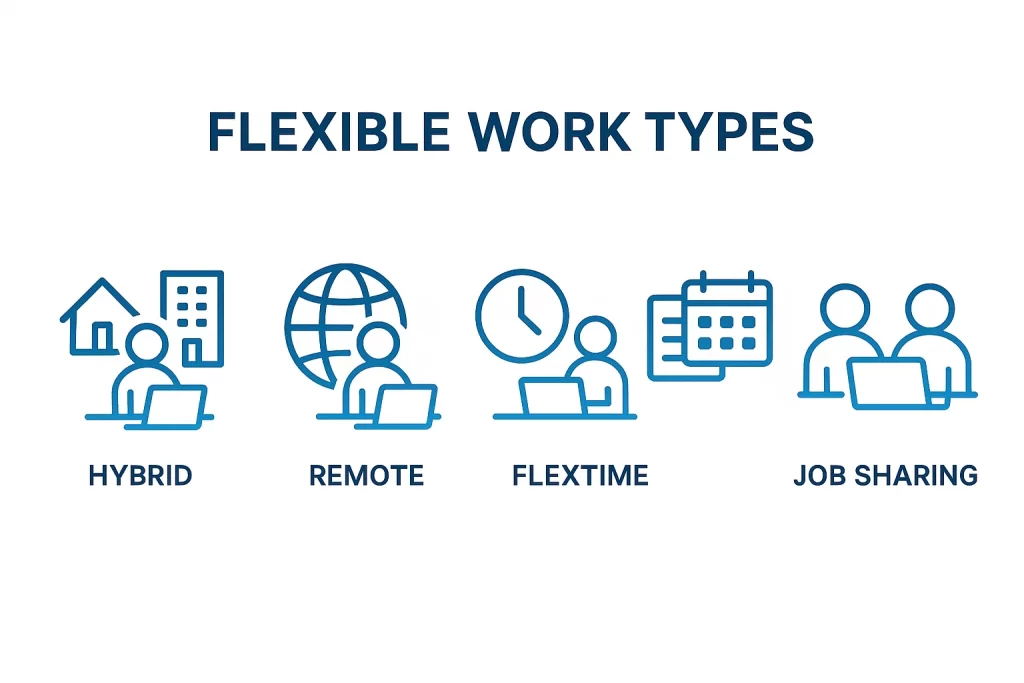
1) Remote vs. Hybrid Work Models
- Remote work: Most days you’re away from the office. It’s perfect for deep-focus roles and remote jobs with flexible hours that don’t need constant in-person time.
- Hybrid work model: Some days in, some days out. You get face time when it counts and home days when you need focus. DeskFlex’s hybrid work software lines up spaces, schedules, and visibility so no one’s guessing who’s in.
2) Flextime
Set your start and finish around core hours. Great for jobs with flexible hours, especially across time zones.
3) Compressed Workweeks
Same hours, fewer days, like 4×10. Longer focus blocks. Longer weekends. Everyone breathes.
4) Job Sharing / Part-Time Work
Two part-time teammatessplit one role. It opens doors for specialized skills and smoother returns from parental leave or caregiving breaks.
5) Work-From-Anywhere Policies
Work from another city or country when the guidelines, secure access, and async-first habits are in place—freedom with guardrails.
| Type | Description | Ideal For |
|---|---|---|
| Remote Work | Most days you’re away from the office. Perfect for deep-focus roles that don’t need constant in-person interaction. | Developers, writers, designers, analysts |
| Hybrid Work Model | Split between home and office. DeskFlex’s hybrid work software helps align spaces, schedules, and visibility for teams. | Teams needing collaboration and focus balance |
| Flextime | Choose start and finish times around core hours to match personal productivity or time zones. | Global teams, customer support, project managers |
| Compressed Workweek | Work full hours in fewer days, like 4×10 schedules—enabling longer focus blocks and longer weekends. | Teams seeking better balance and reduced burnout |
| Job Sharing / Part-Time | Two part-time employees share one role—ideal for retaining specialized talent and enabling work-life flexibility. | Specialists, caregivers, or returning professionals |
| Work-From-Anywhere | Work from any city or country with secure access and async-first collaboration practices. | Remote professionals and digital nomads |
Benefits of Flexible Work Arrangements for Employers
Productivity Boost
Productivity means fewer interruptions and better focus time, which also means higher output. You must pair it with project management and team collaboration tools so work stays visible and organized.
Reduced Overhead Costs
Smaller footprints, smarter space use, as well as fewer fixed desks. Desk booking software plus utilization analytics keeps real estate right-sized.
Talent Retention and Attraction
Flex brings in great people and helps keep them. Team member satisfaction rises when life fits.
Business continuity
Distributed teams don’t grind to a halt when there’s a disruption.
Benefits of Flexible Work Arrangements for Employees
Work-life balance
A flexible work schedule lets folks map work to family rhythms and energy peaks.
Reduced commuting stress
Hybrid and remote cut traffic time. That extra hour fuels better team performance (or a proper breakfast).
Higher job satisfaction
Trust and autonomy lift team member engagement.
Mental health improvements
Choice is calming. Sustainable performance follows.
Challenges of Flexible Work (and How to Solve Them)
Communication Gaps
Decide which channels are for what, set reasonable response windows, and protect meeting-free focus blocks. Teach practical communication skills with a short, shared playbook.
Team Member Isolation
Plan regular team-building activities; some fun and some thoughtful. Toss in critical thinking exercises to spark fresh ideas together.
Tracking Performance & Accountability
Aim for outcomes, not “online” lights. Light check in check out rituals like daily standups, short weekly retros, plus a clean dashboard keep everyone aligned without hovering.
Cybersecurity Risks
Basics matter: secure access, managed devices, role-based permissions, and friendly reminders so people actually follow them.
The Role of Technology in Flexible Work
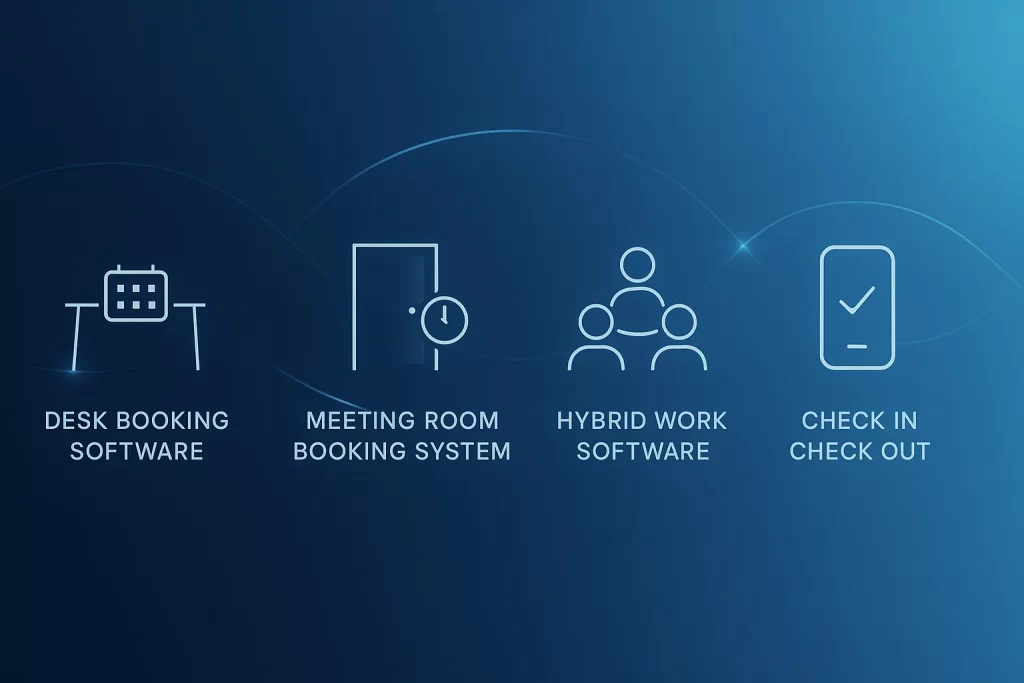
Desk Booking Software
Reserve a desk for the days you’re in—real-time availability, neighborhood seating, and usage insights; no more musical chairs.
Meeting room booking system
Find a room, add equipment, and invite the right people in one flow. Smart reminders and occupancy checks keep no-shows from stealing your time.
Hybrid work software
See who’s on-site, who’s remote, and where to meet. It syncs with calendars and plugs into team collaboration and project management tools, so planning isn’t a scavenger hunt.
Check in Check Out
Quick taps confirm presence, support safety rules, and create accurate occupancy reports without spreadsheets.
Put together, these remote work solutions make planning easy, lift team member productivity, and give leaders data to fine-tune space and schedules.
The Future of Flexible Work (2025 and Beyond)
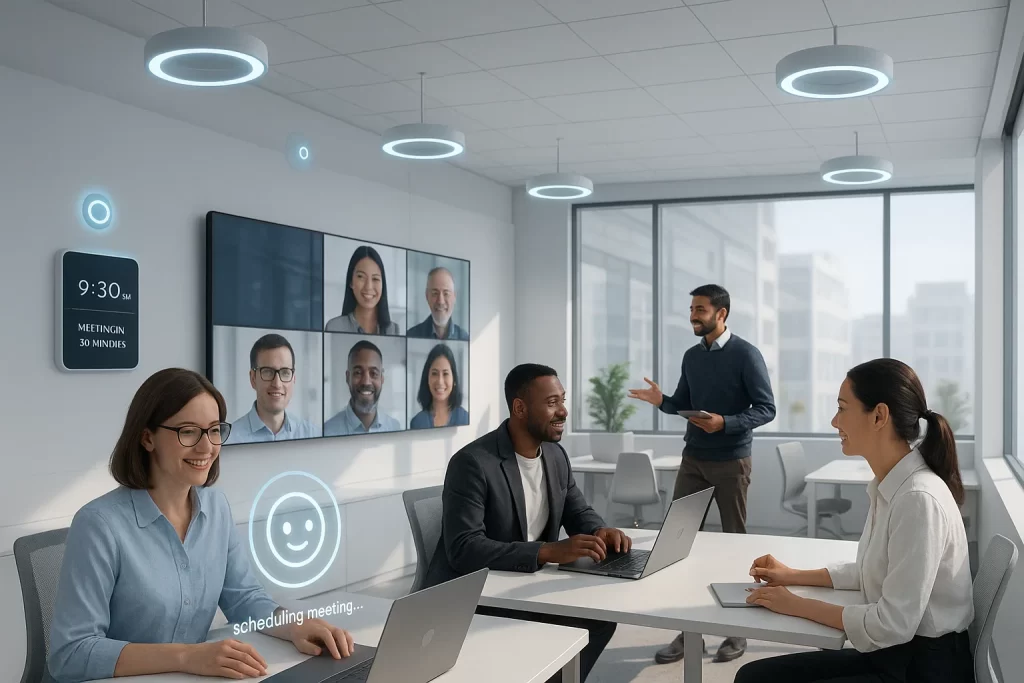
AI-driven scheduling
Innovative suggestions line up in-office days for the right teams at the right moments without blowing past capacity.
Smart office spaces
Sensors and presence analytics adapt seating on the fly. Less waste, better vibes.
Global workforce management
Time-zone–aware planning supports remote vs. hybrid work models, remote jobs with flexible hours, and fair, outcome-based reviews.
Sustainability and green workplace practices
Right-sized real estate, fewer commutes, and energy-aware booking rules shrink cost and carbon.
How DeskFlex Elevates Flexible Team Performance
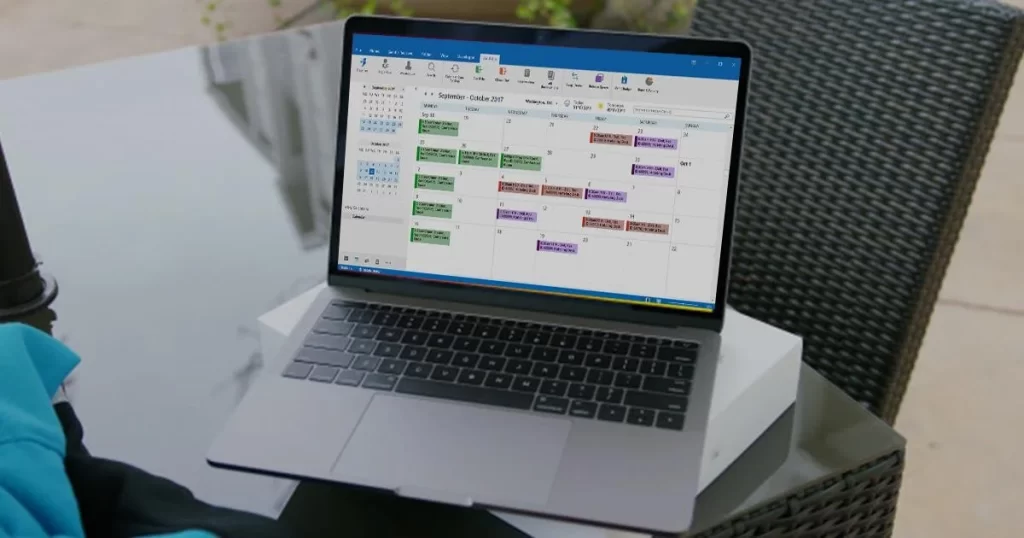
- Instant visibility: One can see who’s where and when.
Planned - collaboration: You can book desks and rooms that match sprint rhythms.
- Decisions with data: The Attendance and space analytics guide policy updates.
- Happier teams: Clear systems can reduce friction and lift team member engagement.
Final Thoughts
Flexible work arrangements show how modern teams run. With clear policies, human leadership, and the right platform, you’ll definitely be ready for the future of work 2025 and beyond.
Curious how this looks in practice? Explore DeskFlex’s desk booking software, meeting room booking system, and hybrid work software to power flexible workplace solutions and measurable team member productivity.
Frequently Asked Question
Typically: remote and hybrid work, flextime, compressed workweeks, job sharing or part-time, and work-from-anywhere policies.
They match team member expectations, expand your talent pool, improve resilience, and help control costs.
Less commute, more focus time, and schedules that match personal energy, supported by clear goals and solid tools.
Communication, isolation, accountability, and security. You can handle these with simple norms, team building activities, effective communication skills training, light check in check out routines, and good cybersecurity.
Use desk booking software, a meeting room booking system, hybrid work software, and integrated project management tools to coordinate people, space, and schedules.
Remote is off-site mainly, while Hybrid blends office and home days and is usually planned with space tools so collaboration days actually line up.
Yes. More innovative space use and higher retention typically offset the cost of change and software.
More AI-assisted planning, smarter offices, globally distributed teams, and greener operations.
People want work-life balance, and of course, autonomy. Employers want stability and access to wider talent. Win-win.
Outcome-first cultures, location-agnostic hiring, and platforms like DeskFlex that make flexibility easy and measurable.











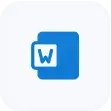
























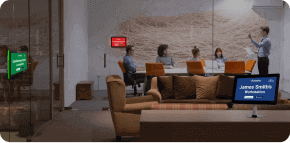










 Support
Support  Demo
Demo  Blog
Blog